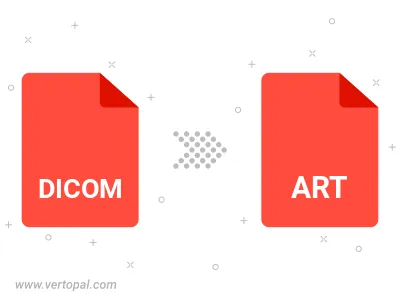Convert DICOM to ART
Convert DICOM images to ART format, edit and optimize images online and free.

DICOM, or Digital Imaging and Communications in Medicine, is a standardized file format used in the field of medical imaging. It facilitates the storage, exchange, and transmission of medical images and related information between devices from different manufacturers, ensuring interoperability in healthcare environments. Originating from efforts by the National Electrical Manufacturers Association (NEMA) and the American College of Radiology (ACR) in the 1980s, DICOM's evolution has played a crucial role in the development of advanced medical imaging technologies and systems.
The ART file extension, associated with PFS: 1st Publisher, stands for "AOLpress Raster Technology". Developed by America Online (AOL), this format was designed to optimize image download speeds over slow internet connections by employing high compression ratios. ART files store single, highly compressed images, allowing for incremental rendering similar to progressive JPEGs. While it was useful in the past, the ART format has largely been replaced by more modern image formats.
Click the Choose File button to select the DICOM file.
Pick any DICOM to ART tools if you need to edit your DICOM file, then click the Convert button.
Let the file convert, then you can download your ART file right afterward.

To change DICOM format to ART, upload your DICOM file to proceed to the preview page. Use any available tools if you want to edit and manipulate your DICOM file. Click on the convert button and wait for the convert to complete. Download the converted ART file afterward.
Follow steps below if you have installed Vertopal CLI on your macOS system.
cd to DICOM file location or include path to your input file.Follow steps below if you have installed Vertopal CLI on your Windows system.
cd to DICOM file location or include path to your input file.Follow steps below if you have installed Vertopal CLI on your Linux system.
cd to DICOM file location or include path to your input file.